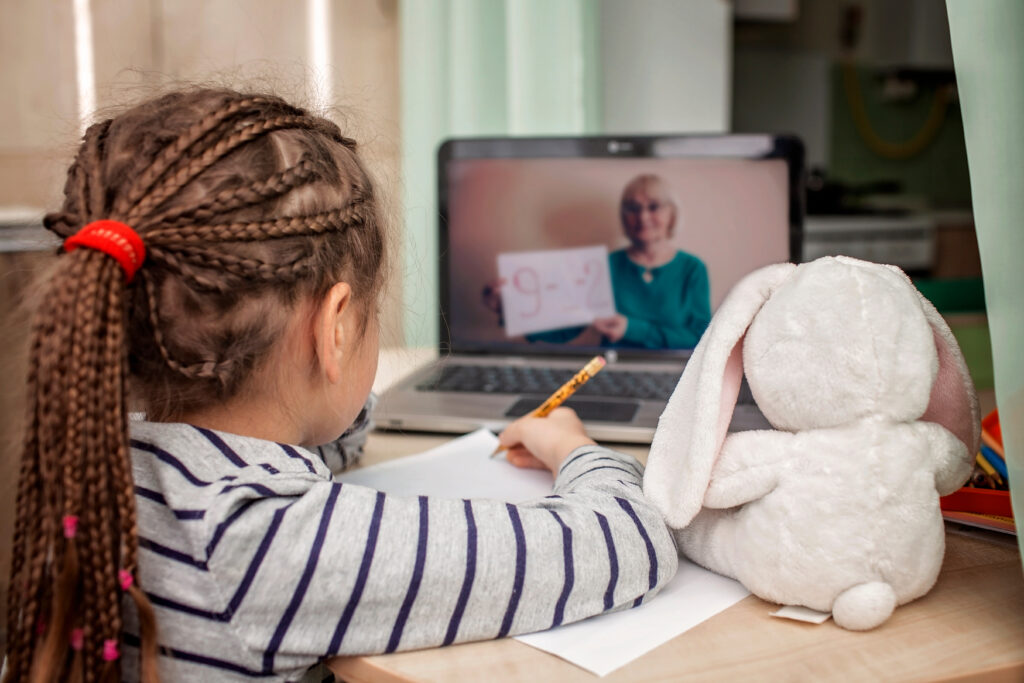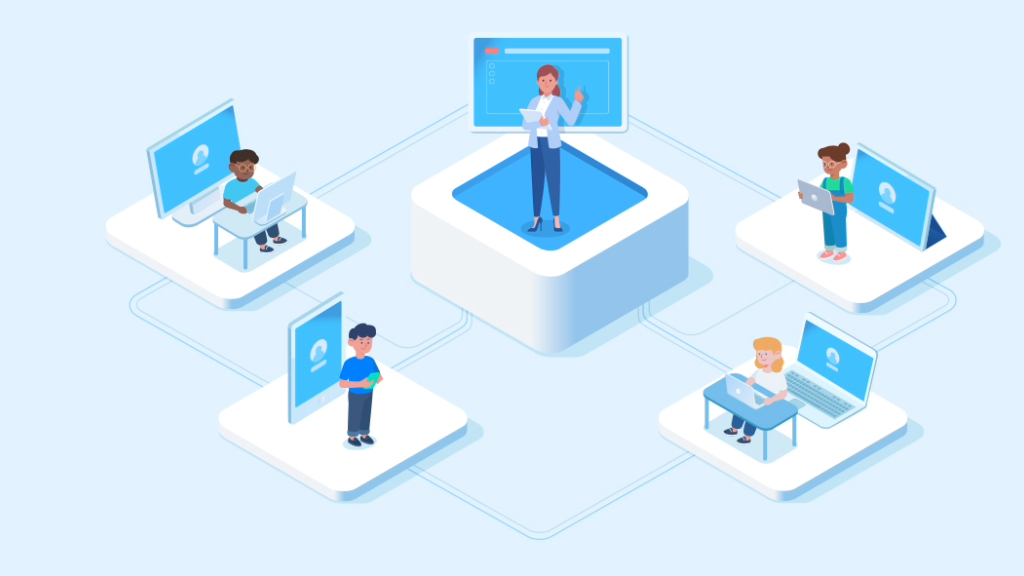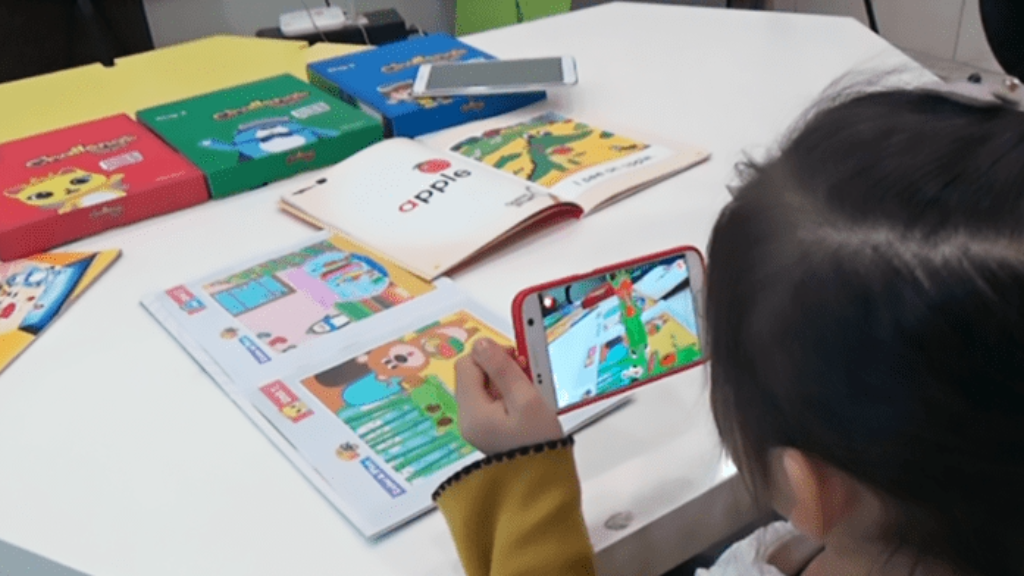Why you should pay attention to Edtech trends
What is EdTech?
EdTech is a combination of education and technology. Technology plays an essential role in the classroom. It can help students learn with interactive games and simulations or provide online educational resources. Recent conferences and forums on the future of education have noted that the combination of education and technology will transform and innovate the educational environment. In addition, global companies such as Google, Apple, and Microsoft are also paying attention to the development and transformation of EdTech. Therefore, it is essential to know the EdTech trends to prepare for the future of education.
In particular, the educational environment has begun to change rapidly as a consensus has formed around the digital transformation of education due to the widespread adoption of online education through COVID-19. As the time paradigm and the image of future talent change and the efficiency of education is emphasized, the adoption of digital technology in education is occurring very quickly. EdTech is the key to this digital transformation of the education environment. In other words, it is a movement to solve the problems of the global education market using information technology.
Importance of EdTech
In the past, there have been many attempts to combine education and information technology. In a broad spectrum, there was postal communication or broadcast communication, and there was also a trend to use ICT-based teaching tools. Because of the development of network technology, Internet-based education remains the most representative example. In the Republic of Korea, the Cyber Home Learning System was introduced to strengthen public education, reduce spending on private education, and narrow the education gap between regions and classes. However, due to the lack of user awareness and learning effectiveness, the number of users has been decreasing year by year, and the service has since been discontinued.
Of course, the system had some impact at the time. It served as an opportunity to activate the online learning market throughout Korea. In 2023, students who learned via the Internet not only frequently use Internet-based learning, but they also play a key role in transforming traditional classrooms into EdTech classrooms. On this basis, Korean education companies have developed strong EdTech content and have been able to become a globally recognized EdTech power.
Technology plays an essential role in the classroom. Teachers can use technology in student learning through interactive games and simulations and use online teaching tools. Technology is the medium that facilitates student-student and teacher-student collaboration. As we can see in South Korea, students who are exposed to technology at a young age have the potential to be competent users of new technologies throughout their lives. This is a necessary competency for students who will live in an age of faster technological development in the future.
For students to get the most out of technology, teachers must also stay current. It is no exaggeration to say that education is the most conservative industry in the world. It is especially difficult for those who have perfected their values as teachers over the last 15 to 20 years when technological development was in its early stage. No matter how good a teacher is, they will face an uncertain future if they stop trying. EdTech trends are fast-moving. Teachers should keep up with the latest devices and software. They also need to share information and get help from those familiar with adopting new technologies.

EdTech trends to watch out for in 2023-2024
EdTech can be used as a tool for designing various forms of teaching and learning offline and online. In addition, education can be transformed into a learner-led, participatory, and collaborative form. The educational environment can also be extended to enable fundamental innovations in education that enable personalized learning and experiential practice for all students.
EdTech is on the rise to maximize educational effectiveness and connect daily life to learning. Combining it with the 4th Industrial Revolution Technology, it also aims to create an environment where data-driven learning and learning support are possible. The global EdTech trends from the perspective of hyper-realization, hyper-connectivity, hyper-intelligence, and hyper-convergence, the main technological keywords of the 4th Industrial Revolution, are as follows.
Education that stimulates the five senses of the students
The magic of virtual learning has surprised many in recent years. Various EdTech platforms put students in different environments using augmented and virtual reality. The form of “realistic experiential learning” using AR/VR is rapidly changing the shape of traditional education. Students can enjoy experiential learning with unlimited scalability using online devices.
Interactive education anytime, anywhere
EdTech Trends for 2024 predicts that it will be possible to connect multiple education stakeholders, including students and teachers, students and students, as well as parents, mentors, and managers. Specifically, a technological and cultural environment will be created to receive more comprehensive and immediate feedback from educational stakeholders. In this process, it will be a big milestone in education not only to achieve individual academic results but also to have “civic competence” and live harmoniously as a member of society.
The transition to distance education and hybrid learning has highlighted how fun and important it is to work and learn together, even if we are separated from each other. In 2024, a platform that enables distance learning will bring together students from all over the world. Without regional or cultural differences, students can work together on projects, share ideas, and improve important teamwork and communication skills.
The proliferation of mobile devices also highly impacts the learning journey and EdTech trends. The wave of mobile learning, where you can learn on the go, is only going to get stronger. Whether you are at home, at the park, or traveling, you can learn anywhere. Anywhere there is an internet connection, students and teachers can be connected, and learning can be continuous and engaging.

Smart teachers and adaptive learning
EdTech will make personalized learning more efficient by introducing smart objects and robots. The EdTech trends of 2024 will take the curriculum and subjects taught in the traditional classroom a step forward. Smart teachers who analyze students’ strengths and weaknesses and automatically suggest the next course content will become a major axis in the education industry.
Of course, this does not mean that all of today’s teachers will be out of a job. EdTech enables teachers to deliver personalized learning to their students. Content can be tailored to students’ individual strengths, weaknesses, and learning styles. Adaptive learning enables more personalized instruction than ever before without overwhelming the teachers.
Teachers also gain a trusted partner in their modern educational journey: a learning management system (LMS). Numerous teachers benefit greatly from EdTech solutions and LMS platforms. Workflows are further streamlined and digital content management and delivery is simplified for them. They can also track student progress and provide feedback more efficiently. Platforms like Google Classroom not only promote student engagement but also serve as an important resource to reduce teacher workload.
Hyper-convergence of education business and platforms
The education industry, as a meta-industry of all industries, has enormous charisma. This is because the foundation of the education industry is to promote expansion and maturity to the outside world by providing human resources with potential at the right time.
As explained above, the modern education environment is renewed by “realization/connectivity/intelligence/convergence,” keywords of the 4th Industrial Revolution. Accordingly, EdTech trends are leading to changes in the future of education by reshaping the future educational environment and promoting a new design of educational methods. This is the force that will lead to further changes in policies and systems, social environment, educational environment, and industry.
Governments around the world are discussing or already implementing policies related to ICT in education, in the form of policies/systems that take advantage of the evolution and change of information technology. This is because schooling was no longer possible due to COVID-19 and social problems such as education quality and education gaps were occurring. The education industry has chosen EdTech as a means to address these challenges. The generalization of EdTech to support the future educational environment is already underway.
Accordingly, the education method is also changing to a smart education environment that uses EdTech technology to enable customized learning. Beyond online instruction, blended learning, and flipped learning, we have recently seen the complete combination of offline and online classes. EdTech tools enable competency-based, tailored learning that focuses on the learner and emphasizes discovery and participation.
However, not all of these innovations are possible in the state, local governments, and schools alone. Accordingly, public and private educational institutions are building an EdTech educational environment by partnering with education companies. This is a new education market created by EdTech trends. Global EdTech companies are gaining strength in the U.S., China, and India, and the power of the EdTech brand is also becoming stronger in Korea. In particular, VISANG EDUCATION, which has been in the publishing and education industry for more than 25 years in Korea, is a stronghold of education and is creating new services and education trends by incorporating the technologies of the 4th Industrial Revolution.

EdTech trends are already inescapable, and AllviA is stepping up to play a key role in the digital transformation of education.
The key is the interactive class method
Experts predict that by 2050, 90% of the world’s population will have access to the Internet. Thus, more than a few billion people will be potential participants in EdTech. Less and less time will be spent in physical classrooms, and the future of education will be more and more time spent on the Internet. Inevitably, everything – from textbooks, learning methods, materials, and homework – will be digitized. From elementary school to college, the digital footprint being left throughout the educational process is undoubtedly a major trend.
AllviA is constantly researching and working to make education more global and technological. Users of the AllviA platform are spared the hassle of searching for online resources that fit into their pre-planned curriculum. Instead, they can plan interactive lessons based on the specific curriculum provided by AllviA. What AllviA aims to create is not a classroom full of online devices without eye contact. The reason is that technology makes communication between students and teachers in the classroom more enjoyable, easier, and more convenient to share engaging content.
AllviA EdTech’s keyword: “Enjoy”
One of the most transformative EdTech trends shaping the future of educational technology is “Gamification.” Forecasts indicate that the global game-based learning market will reach $29.7 billion by 2026, growing at an average rate of 21.9%. Game-based learning is about helping students learn more effectively by working toward a specific goal while having fun. Teachers can make their lessons more fun by incorporating game features before or after class. Gamified education encourages friendly competition and teamwork from younger students to seniors.
AllviA’s content not only allows students to review and apply what they have learned but also uses games as a feature applied in the real world. They can learn not only about the region they live in but also about other parts of the planet. This enables them to make decisions and act according to their new environment. We believe that game content combined with education is a function that enables children to make responsible decisions and improve their teamwork skills. AllviA’s game content has a positive effect on improving thinking and on the ability to think in new ways.
AllviA’s dream EdTech Trends classroom
Existing academies, publishers, and e-learning providers in global industries are transforming into EdTech companies. The EdTech ecosystem globally is creating a new service industry by bringing together content, platforms, networks, and devices. In addition, there are numerous expert opinions on EdTech trends, and the future is being promoted in various directions.
EdTech trends are not just a temporary thing due to COVID-19. Overcoming the pandemic was just the beginning, as it is leading to changes in learning materials innovation and insights into learning history. AllviA’s goal is to use EdTech to create a more advanced learning environment in childhood, elementary and middle school, the most important time in life. In addition, we will continue to improve our platform and content to keep pace with changes in educational technology so that teachers and students can benefit from innovations in the classroom. We actively support partners who promote AllviA around the world and strive to become an EdTech platform that leads the global education industry market.







